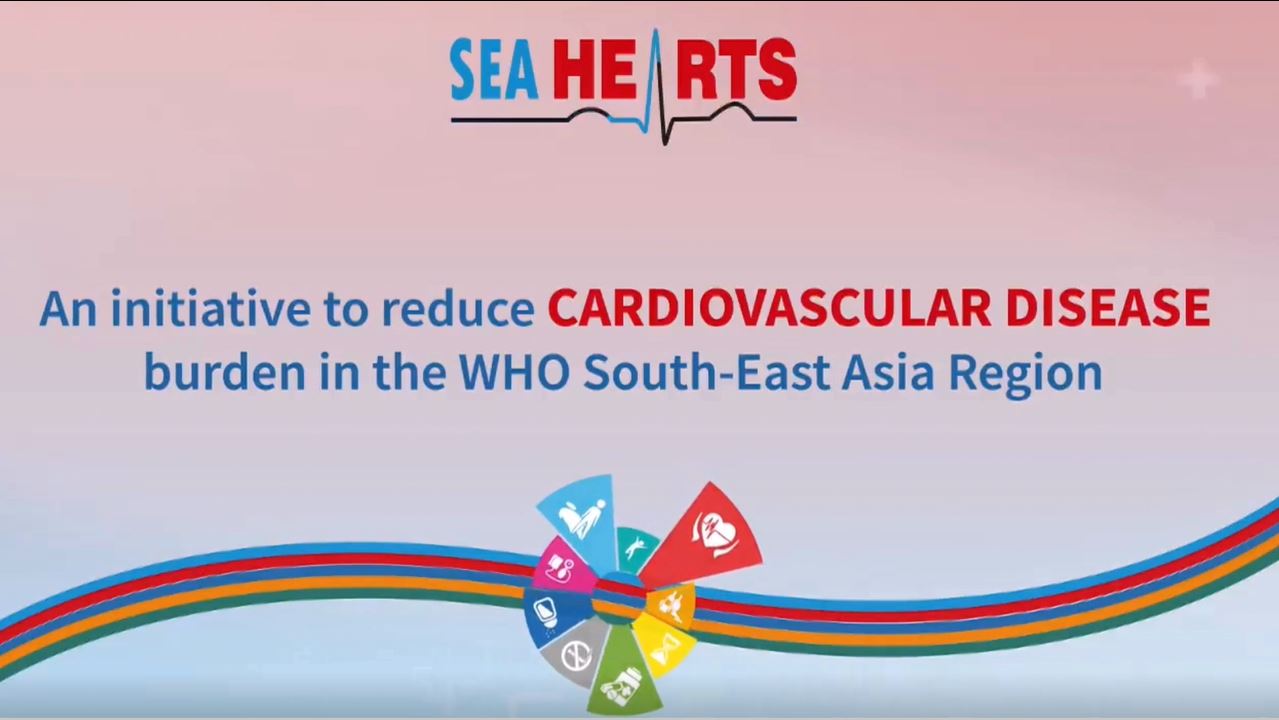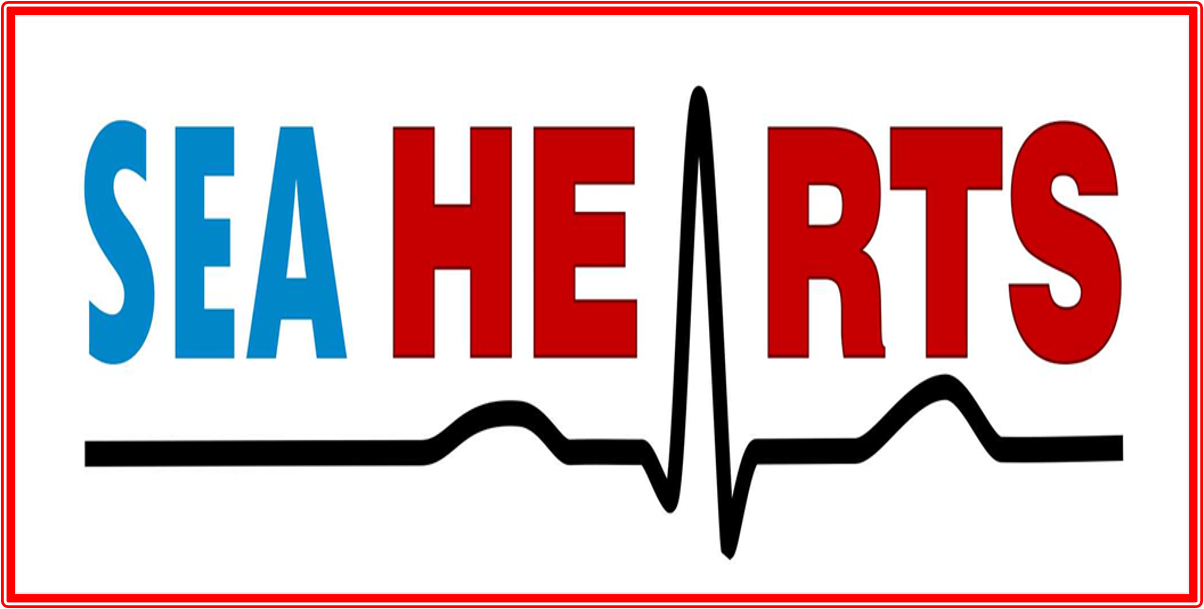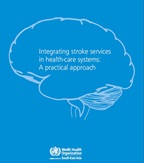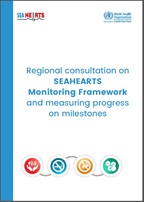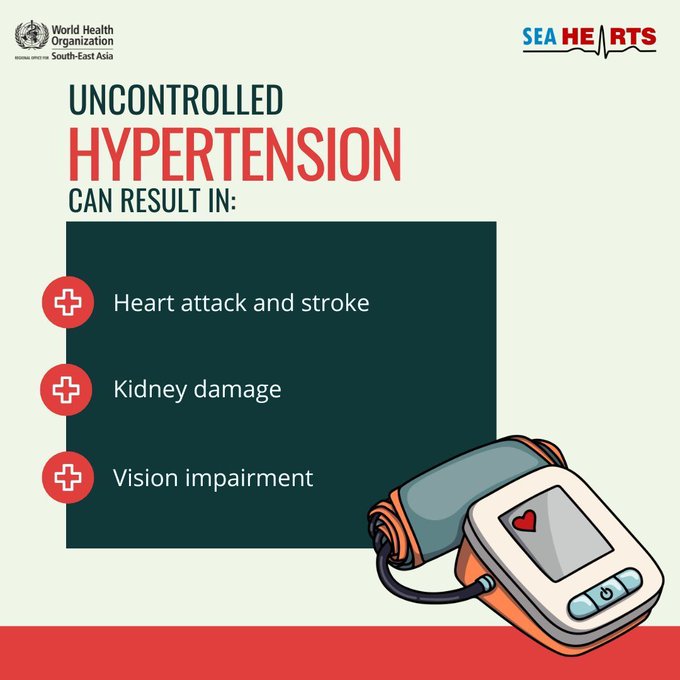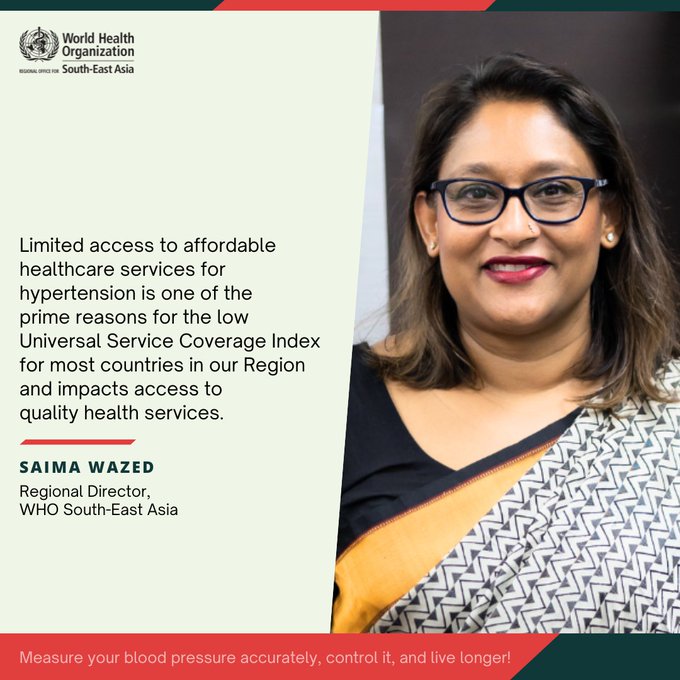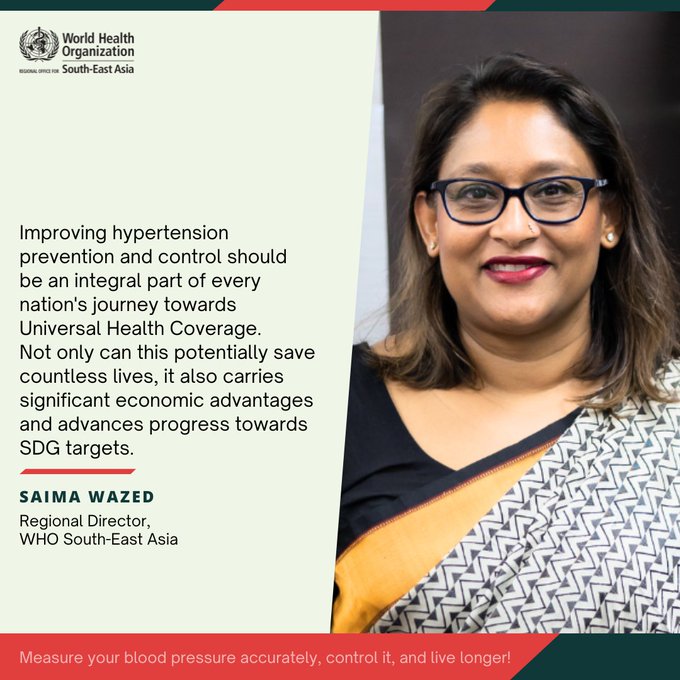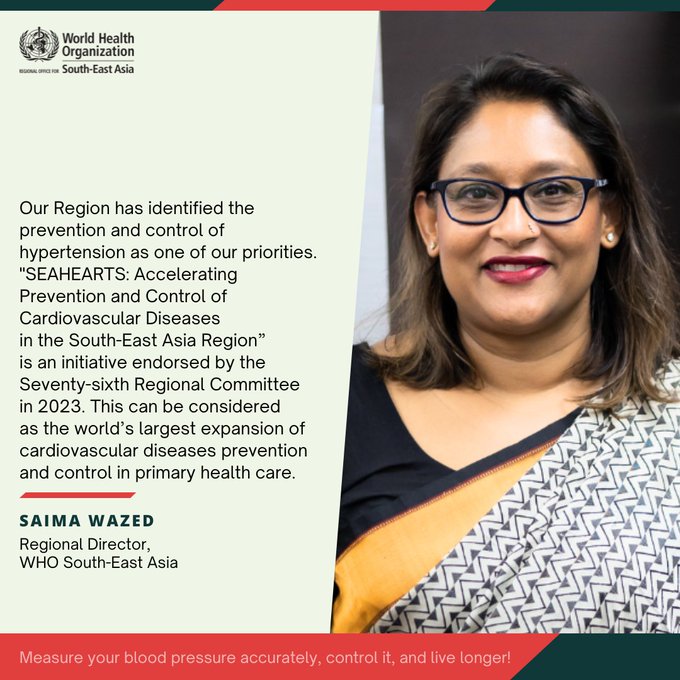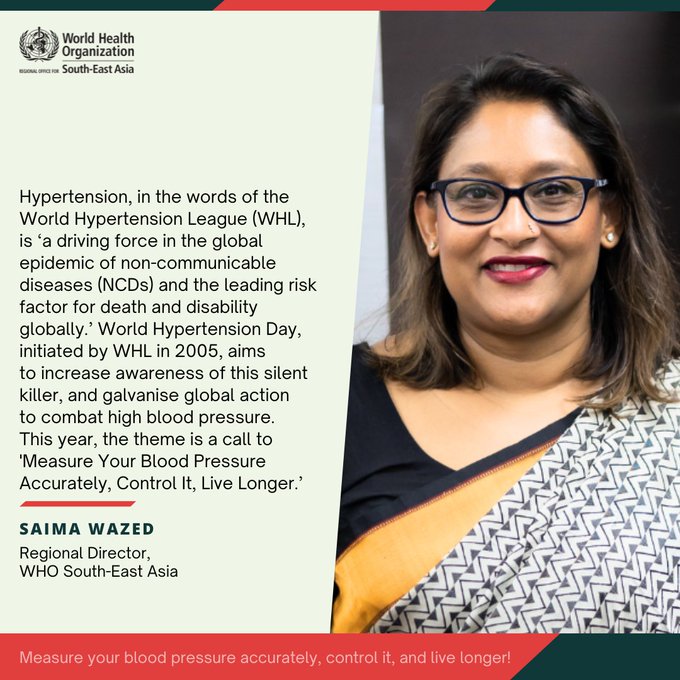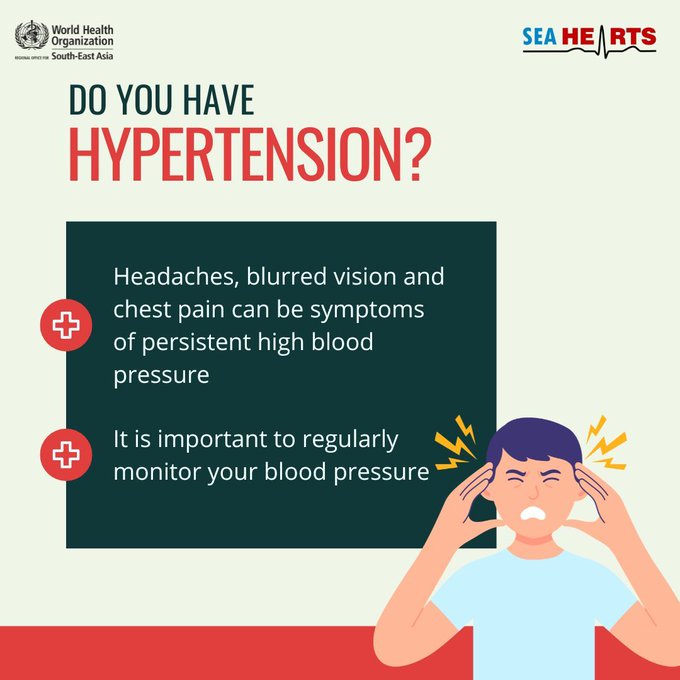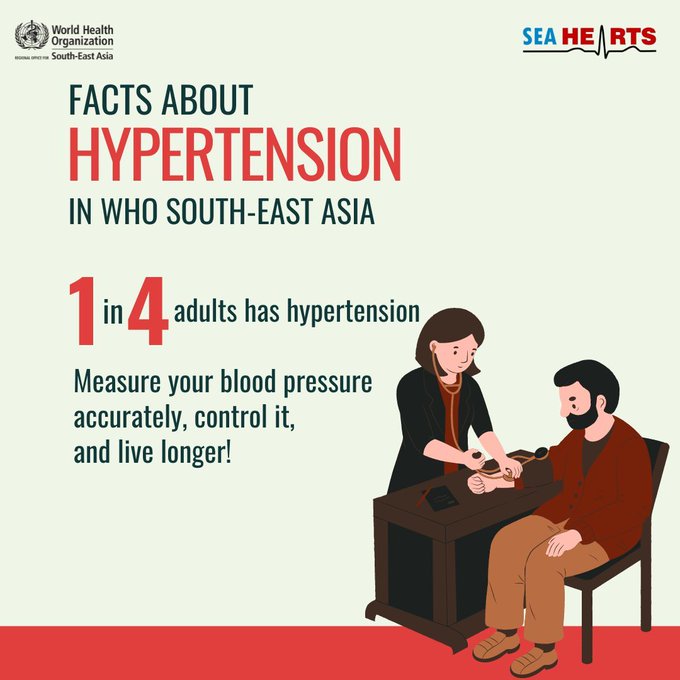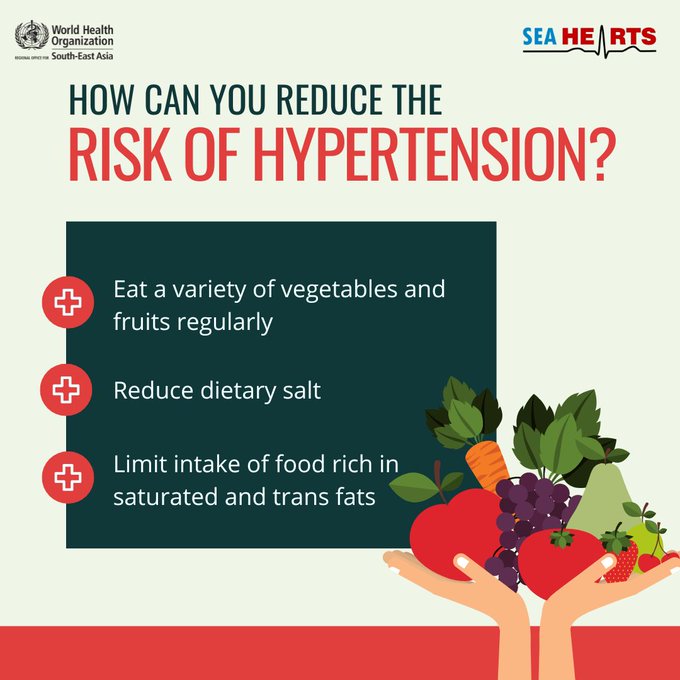
Management of cardiovascular disease
A healthcare professional provides a blood pressure check-up for an elderly woman during a community health visit.
Overview
Cardiovascular diseases (CVDs) remain the leading cause of death globally and in the WHO South-East Asia Region, accounting for 32% of deaths due to noncommunicable diseases (NCDs).
Ischemic heart disease (IHD) and stroke are the most common forms of CVD. IHD typically results from atherosclerosis—plaque build-up in the arteries—which narrows or blocks blood flow, potentially causing heart attacks, angina, or stroke. Stroke-related deaths are also rising in the region, where over three-quarters of CVD-related deaths occur.
In 2021, over 4.25 million deaths in the Region were due to CVDs, and nearly half(49.2%) of these occurred prematurely among people aged 30–69 years.
These trends highlight the urgent need for early detection, risk factor control, and effective management of CVDs to reduce preventable mortality.
The SEAHEARTS initiative core intervention of region brings together efforts made for risk factor reduction (tobacco control, salt reduction and eliminating industrially produced trans-fatty acids) and improving hypertension and diabetes treatment cascade in the broader context of NCD prevention and control.
WHO South-East Asia Response
The WHO South-East Asia Region is implementing SEAHEARTS, adapted from the WHO HEARTS package, to reduce CVD risk and strengthen primary health care. Launched in 2022, it promotes tobacco control, salt reduction, and elimination of trans-fat while scaling up protocol-based management for hypertension and diabetes. The goal is to place 100 million people on standard treatment by 2025, improving access to medicines and reducing premature CVD mortality.
Key facts
Cardiovascular diseases (CVDs)
- Cardiovascular diseases (CVDs) are the leading cause of death globally.
- An estimated 4.3 million people in the WHO SE Asia region died from CVDs in 2021
- Out of the 4.7 million premature deaths (under the age of 70) due to noncommunicable diseases, 44.4% were caused by CVDs.
- Most cardiovascular diseases can be prevented by addressing behavioural and environmental risk factors such as tobacco use, unhealthy diet and obesity, physical inactivity, harmful use of alcohol and air pollution.
- It is important to detect cardiovascular disease as early as possible so that management with counselling and medicines can begin.
Hypertension
- Hypertension is a major cause of premature death in the region.
- One of the regional targets for noncommunicable diseases is 25% relative reduction in prevalence of raised blood pressure by 2030
- An estimated 298 million adults (32%) aged 30–79 years have hypertension.
- An estimated 39% of adults with hypertension are aware that they have the condition and 29% are under treatment.
- More than half of adults (61%) with hypertension are not diagnosed.
- 14% of adults with hypertension have it under control.
- All countries in the region have drug and dose specific management protocol for hypertension management at primary health care
Stroke
- The WHO South-East Region experiences a substantial burden of stroke, with a reported annual prevalence of approximately10,423,817 cases.
- The total estimated stroke deaths in the SE Asia Region were approximately 1.51 million in 2021.
- Ischemic stroke is the most prevalent type of stroke in the SE Asia Region, with an incidence of 6.9 per 1,000 population. This is followed by intracerebral haemorrhage, with an incidence of 5.4 per 1,000, and subarachnoid haemorrhage, which occurs at a rate of0.93 per 1,000 population.
Guidelines
- Prevention and control of noncommunicable diseases: guidelines for primary health care in low resource settings
- Conducting Systematic Reviews to inform WHO Guidelines for the Pharmacological treatment of hypertension
- Framework for the care of acute coronary syndrome and stroke
- Integrating stroke services in health-care systems: A practical approach
- Guideline for the pharmacological treatment of hypertension in adults

